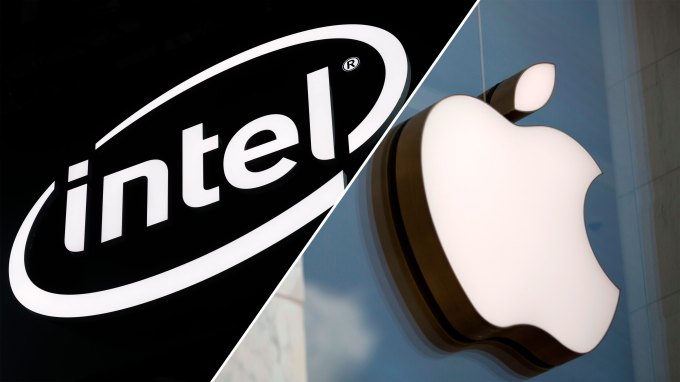In this blog you can visit new technology latest news about advance technology viral news latest andriod phones and much more visit this blog for more updates daily thanks
Tuesday, 30 July 2019
Monday, 29 July 2019
A guide to Virtual Beings and how they impact our world
Money from big tech companies and top VC firms is flowing into the nascent “virtual beings” space. Mixing the opportunities presented by conversational AI, generative adversarial networks, photorealistic graphics, and creative development of fictional characters, “virtual beings” envisions a near-future where characters (with personalities) that look and/or sound exactly like humans are part of our day-to-day interactions.
Last week in San Francisco, entrepreneurs, researchers, and investors convened for the first Virtual Beings Summit, where organizer and Fable Studio CEO Edward Saatchi announced a grant program. Corporates like Amazon, Apple, Google, and Microsoft are pouring resources into conversational AI technology, chip-maker Nvidia and game engines Unreal and Unity are advancing real-time ray tracing for photorealistic graphics, and in my survey of media VCs one of the most common interests was “virtual influencers”.
The term “virtual beings” gets used as a catch-all categorization of activities that overlap here. There are really three separate fields getting conflated though:
- Virtual Companions
- Humanoid Character Creation
- Virtual Influencers
These can overlap — there are humanoid virtual influencers for example — but they represent separate challenges, separate business opportunities, and separate societal concerns. Here’s a look at these fields, including examples from the Virtual Beings Summit, and how they collectively comprise this concept of virtual beings:
Virtual companions
Virtual companions are conversational AI that build a unique 1-to-1 relationship with us, whether to provide friendship or utility. A virtual companion has personality, gauges the personality of the user, retains memory of prior conversations, and uses all that to converse with humans like a fellow human would. They seem to exist as their own being even if we rationally understand they are not.
Virtual companions can exist across 4 formats:
- Physical presence (Robotics)
- Interactive visual media (social media, gaming, AR/VR)
- Text-based messaging
- Interactive voice
While pop culture depictions of this include Her and Ex Machina, nascent real-world examples are virtual friend bots like Hugging Face and Replika as well as voice assistants like Amazon’s Alexa and Apple’s Siri. The products currently on the market aren’t yet sophisticated conversationalists or adept at engaging with us as emotional creatures but they may not be far off from that.
from Apple – TechCrunch https://ift.tt/2K7D1QI
Google’s Pixel 4 smartphone will have motion control and face unlock
Google’s Pixel 4 is coming out later this year, and it’s getting the long-reveal treatment thanks to a decision this year from Google to go ahead and spill some of the beans early, rather than saving everything for one big, final unveiling closer to availability. A new video posted by Google today about the forthcoming Pixel 4 (which likely won’t actually be available until fall) shows off some features new to this generation: Motion control and face unlock.
The new “Motion Sense” feature in the Pixel 4 will detect waves of your hand and translate them into software control, including skipping songs, snoozing alarms and quieting incoming phone call alerts, with more planned features to come, according to Google. It’s based on Soli, a radar-based fine motion detection technology that Google first revealed at its I/O annual developer conference in 2016. Soli can detect very fine movements, including fingers pinched together to mimic a watch-winding motion, and it got approval from the FCC in January, hinting it would finally be arriving in production devices this year.
Pixel 4 is the first shipping device to include Soli, and Google says it’ll be available in “select Pixel countries” at launch (probably due to similar approvals requirements wherever it rolls out to consumers).
Google also teased “Face unlock,” something it has supported in Android previously — but Google is doing it very differently with the Pixel 4 than it has been handled on Android in the past. Once again, Soli is part of its implementation, turning on the face unlock sensors in the device as it detects your hand reaching to pick up the device. Google says this should mean that the phone will be unlocked by the time you’re ready to use it, as it does this all on the fly, and works from pretty much any authentication.
Face unlock will be supported for authorizing payments and logging into Android apps, as well, and all of the facial recognition processing done for face unlock will occur on the device — a privacy-oriented feature that’s similar to how Apple handles its own Face ID. In fact, Google also will be storing all the facial recognition data securely in its own dedicated on-device Titan M security chip, another move similar to Apple’s own approach.
Google made the Pixel 4 official and tweeted photos (or maybe photorealistic renders) of the new smartphone back in June, bucking the trend of keeping things unconfirmed until an official reveal closer to release. Based on this update, it seems likely we can expect to learn more about the new smartphone ahead of its availability, which is probably going to happen sometime around October, based on past behavior.
from Android – TechCrunch https://ift.tt/2GxuYvu
via IFTTT
Google’s Pixel 4 smartphone will have motion control and face unlock
Google’s Pixel 4 is coming out later this year, and it’s getting the long reveal treatment thanks to a decision this year from Google to go ahead and spill some of the beans early, rather than saving everything for one big final unveiling closer to availability. A new video posted by Google today about the forthcoming Pixel 4 (which likely won’t actually be available until fall) shows off some features new to this generation: Motion control and face unlock.
The new “Motion Sense” feature in the Pixel 4 will detect waves of your hand and translate them into software control, including skipping songs, snoozing alarms and quieting incoming phone call alerts, with more planned features to come, according to Google. It’s based on Soli, a radar-based fine motion detection technology that Google first revealed at its I/O annual developer conference in 2016. Soli can detect very fine movements, including fingers pinched together to mimic a watch-winding motion, and it got approval from the FCC in January, hinting it would finally be arriving in production devices this year.
Pixel 4 is the first shipping device to include Soli, and Google says it’ll be available in “select Pixel countries” at launch (probably due to similar approvals requirements wherever it rolls out to consumers).
Google also teased “Face unlock,” something it has supported in Android previously – but Google is doing it very differently than it has been handled on Android in the past with the Pixel 4. Once again, Soli is part of its implementation, turning on the face unlock sensors in the device as it detects your hand reaching to pick up the device. Google says this should mean that the phone will be unlocked by the time you’re ready to use it, since it does this all on the fly, and works from pretty much any authentication.
Face unlock will be supported for authorizing payments and logging into Android apps, as well, and all of the facial recognition processing done for face unlock will occur on the device – a privacy-oriented feature that’s similar to how Apple handles its own Face ID. In fact, Google will also be storing all the facial recognition data securely in its own dedicated on-device Titan M security chip, another move similar to Apple’s own approach.
Google made the Pixel 4 official and tweeted photos (or maybe photorealistic renders) of the new smartphone back in June, bucking the trend of keeping things unconfirmed until an official reveal closer to release. Based on this update, it seems likely we can expect to learn more about the new smartphone ahead of its availability, which is probably going to happen sometime around October based on past behavior.
from Apple – TechCrunch https://ift.tt/2GxuYvu
Sunday, 28 July 2019
Report claims all three new iPhones planned for 2020 will support 5G
Apple analyst Ming-Chi Kuo — sometimes described as “the most accurate Apple analyst in the world” — has written a new note to investors saying that the three iPhones expected to launch in 2020 will feature support for 5G. In previous Kuo reports, it’s said the 2020 iPhones could be available in new sizes: a 5.4 and 6.7-inch high-end iPhones with OLED displays, along with a 6.1-inch model with an OLED display.
Previously, he predicted that only two of the three new iPhones slated for 2020 would support 5G. But with well-spec’d Androids flooding the market, he says it looks like Apple will offer 5G in all models in order to better compete. He’s also confirmed the view that Apple will be able to throw more resources into developing the 5G iPhone now that it has acquired Intel’s smartphone modem chip business.
The report, leaked to MacRumors, contains this quote:
We now believe that all three new 2H20 iPhone models will support 5G for the following reasons. (1) Apple has more resource for developing the 5G iPhone after the acquisition of Intel baseband business. (2) We expect that the prices of 5G Android smartphones will decline to $249-349 USD in 2H20. We believe that 5G Android smartphones, which will be sold at $249-349 USD, will only support Sub-6GHz. But the key is that consumers will think that 5G is the necessary function in 2H20. Therefore, iPhone models which will be sold at higher prices have to support 5G for winning more subsidies from mobile operators and consumers’ purchase intention. (3) Boosting 5G developments could benefit Apple’s AR ecosystem.
The report expects all three 2020 iPhone models to support both mmWave and Sub-6GHz spectrum (two different kinds of 5G) for the US market. Whether Apple will launch a 5G iPhone that only supports Sub-6GHz, allowing for a lower price and thus making it suitable for the Chinese market, remains unclear.
mmWave is the ‘fastest 5G’ that’s most often referred to, but as it is suited to denser, urban areas, it will not be used as much in rural or suburban areas, where mid-bands and low-bands, called sub-6GHz 5G, will be employed. All are banks are faster than 4G, with mmWave the fastest.
Apple will use modem chips from Qualcomm in its 2020 5G iPhones, while it works on its own modem chips, due in 2021.
from iPhone – TechCrunch https://ift.tt/2ZriZqA
Report claims all three new iPhones planned for 2020 will support 5G
Apple analyst Ming-Chi Kuo — sometimes described as “the most accurate Apple analyst in the world” — has written a new note to investors saying that the three iPhones expected to launch in 2020 will feature support for 5G. In previous Kuo reports, it’s said the 2020 iPhones could be available in new sizes: a 5.4 and 6.7-inch high-end iPhones with OLED displays, along with a 6.1-inch model with an OLED display.
Previously, he predicted that only two of the three new iPhones slated for 2020 would support 5G. But with well-spec’d Androids flooding the market, he says it looks like Apple will offer 5G in all models in order to better compete. He’s also confirmed the view that Apple will be able to throw more resources into developing the 5G iPhone now that it has acquired Intel’s smartphone modem chip business.
The report, leaked to MacRumors, contains this quote:
We now believe that all three new 2H20 iPhone models will support 5G for the following reasons. (1) Apple has more resource for developing the 5G iPhone after the acquisition of Intel baseband business. (2) We expect that the prices of 5G Android smartphones will decline to $249-349 USD in 2H20. We believe that 5G Android smartphones, which will be sold at $249-349 USD, will only support Sub-6GHz. But the key is that consumers will think that 5G is the necessary function in 2H20. Therefore, iPhone models which will be sold at higher prices have to support 5G for winning more subsidies from mobile operators and consumers’ purchase intention. (3) Boosting 5G developments could benefit Apple’s AR ecosystem.
The report expects all three 2020 iPhone models to support both mmWave and Sub-6GHz spectrum (two different kinds of 5G) for the US market. Whether Apple will launch a 5G iPhone that only supports Sub-6GHz, allowing for a lower price and thus making it suitable for the Chinese market, remains unclear.
mmWave is the ‘fastest 5G’ that’s most often referred to, but as it is suited to denser, urban areas, it will not be used as much in rural or suburban areas, where mid-bands and low-bands, called sub-6GHz 5G, will be employed. All are banks are faster than 4G, with mmWave the fastest.
Apple will use modem chips from Qualcomm in its 2020 5G iPhones, while it works on its own modem chips, due in 2021.
from Apple – TechCrunch https://ift.tt/2ZriZqA
Week in Review: Regulation boogaloo
Hello, weekenders. This is Week-in-Review, where I give a heavy amount of analysis and/or rambling thoughts on one story while scouring the rest of the hundreds of stories that emerged on TechCrunch this week to surface my favorites for your reading pleasure.
Last week, I talked about how services like Instagram had moved beyond letting their algorithms take over the curation process as they tested minimizing key user metrics such as “like” counts on the platform.

John Taggart/Bloomberg via Getty Images
The big story
The big news stories this week intimately involved the government poking its head into the tech industry. What was clear between the two biggest stories, the DoJ approving the Sprint/T-Mobile merger and the FTC giving Facebook a $5 billion slap on the wrist, is that big tech has little to worry about its inertia being contained.
It seems the argument from Spring and T-Mobile that it was better to have three big telecom companies in the U.S. rather than two contenders and two pretenders, seems to have stuck. Similarly, Facebook seems to have done a worthy job of indicating that it will handle the complicated privacy stuff but that they’ll let the government orgs see what they’re up to.
Fundamentally, none of these orgs seem to want to harm the growth of these American tech companies and I have a tough time believing that perspective is going to magically get more toothy in some of these early antitrust investigations. The government might be making a more concerted effort to understand how these businesses are structured, but even focusing solely on something like the cloud businesses of Microsoft, Google and Amazon, I have little doubt that the government is going to spend an awfully long time in the observation phase.
The danger is erraticism and for that the worst government fear for tech isn’t a three-letter agency, it’s the Twitter ramblings of POTUS.
feedback -> @lucasmtny
Onto the rest of the week’s news.

(Photo: ALASTAIR PIKE,THOMAS SAMSON/AFP/Getty Images)
Trends of the week
Here are a few big news items from big companies, with green links to all the sweet, sweet added context:
- Apple dropping $1 billion on Intel’s modem business
Apple is snapping up a missing link in its in-house component production with the $1B purchase of most of Intel’s modem business. This follows a dramatic saga between Intel, Qualcomm and Apple over the past year, but Apple will be making its own smartphone modems the question is when they actually end up in new iPhones. Read more here. - Microsoft dropping $1 billion on OpenAI
Microsoft announced this week that it is dumping $1 billion into Sam Altman’s OpenAI research group. The partnership is pretty major, but it’s just one of the interesting avenues Microsoft is using to ensure its Azure services gain notable customers. Read more here. - Galaxy Fold is coming back!
After a very embarrassing soft launch, Samsung which managed to make it a several devices beyond the Note 7 before another garbage fire is trying its hand at the Galaxy Fold again and will be releasing it sometime in September. It seems like the carriers are a little dubious of the prospect and T-Mobile has already opted out of carrying it. Read more here.
GAFA Gaffes [Facebook Edition!!]
How did the top tech companies screw up this week? This clearly needs its own section, in order of badness:
- Facebook gets five:
[Facebook settles with FTC: $5 billion and new privacy guarantees] - FTC isn’t quite done with Facebook:
[Facebook says it’s under antitrust investigation by the FTC] - Facebook dismissed CA warnings:
[Facebook ignored staff warnings about sketchy Cambridge Analytica in September 2015] - Facebook left kids vulnerable:
[Facebook fails to keep Messenger Kids safety promise]

Extra Crunch
Our premium subscription service had another week of interesting deep dives. This week, my colleague Danny spoke with some top VCs about why fintech startups have been raising massive amounts of cash and he seemed to walk away with some interesting impressions.
Why fintech VC mega rounds have become so common
“…The biggest challenge that has faced fintech companies for years — really, the industry’s consistent Achilles’ heel — is the cost of acquiring a customer. Financial customer relationships are incredibly valuable, and the cost of acquiring a user for any product is among the most expensive in every major channel.
And those costs are going up…”
Here are some of our other top reads for premium subscribers.
- The roles tools play in employee engagement
- Which types of startups are most often profitable
- What to watch for in a VC term sheet
We’re excited to announce The Station, a new TechCrunch newsletter all about mobility. Each week, in addition to curating the biggest transportation news, Kirsten Korosec will provide analysis, original reporting and insider tips. Sign up here to get The Station in your inbox beginning in August.
from Apple – TechCrunch https://ift.tt/2GLtGgL
